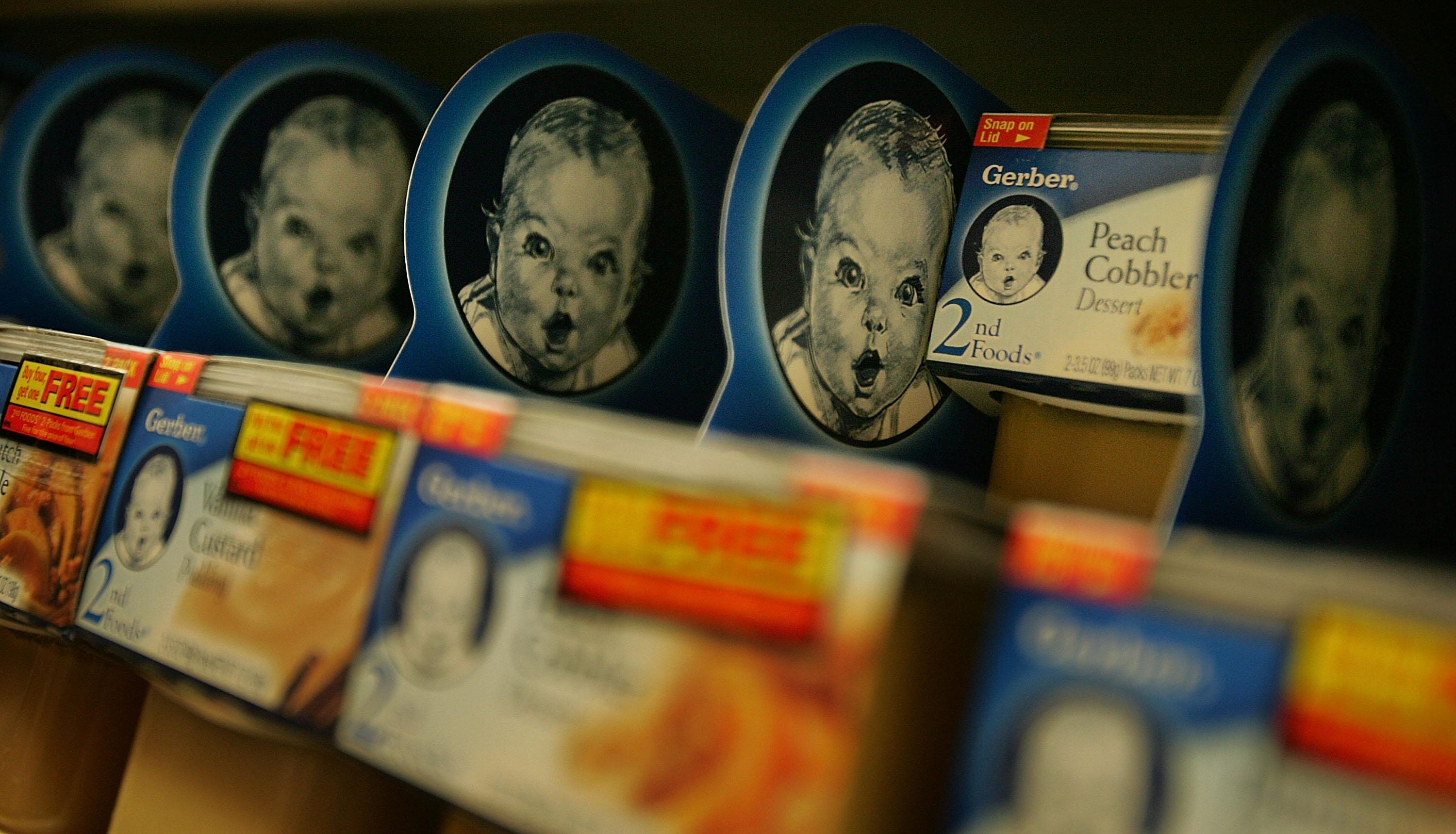Last week, the baby food company Gerber revealed that Lucas Warren, a one-year-old white boy with Down syndrome, would be their 2018 “spokesbaby.” There are reasons one might be pleased at this news: Lucas is super cute, with a perfect smile. Representation matters, and inclusive imagery in advertising is important. Yet despite the ensuing tsunami of coverage, and the hopeful responses from all across the Down syndrome community about building an inclusive society, let’s temper our expectations that this exercise in corporate branding will matter in any meaningful way. The existence of cute African-American, Latin-American, and Asian-American Gerber babies hasn’t dampened racism in any noticeable way. Further, the campaign is all talk: Gerber isn’t taking any meaningful steps toward inclusive employment for adults with disabilities either. It’s just a cute picture. You don’t get far with cute.
Since 2011, Gerber has been holding a contest (with a $50,000 prize) to identify the nation’s cutest baby, in a bid to both enliven and diversify their commercial iconography. While Lucas is the company’s first foray into disability representation, this is far from the first time a cute white child with Down syndrome has been featured in major advertising. In 2011, Nordstrom featured Ryan, a white male toddler with Down syndrome. In 2012, Target placed Ryan in an ad with four other kids from diverse races. The “Starting With Julius” campaign has been pushing for inclusive advertising in Australia, and there are similar broad efforts elsewhere. Once, just depicting these kids seemed revolutionary, but now it’s time for a revolution that goes beyond cute.
STOP USING DOWN SYNDROME AS ANTI-CHOICE PROPAGANDA: Right-wing activists hope that photos of kids with Down syndrome will keep Ireland from legalizing abortion.
There’s nothing necessarily wrong with “cute.” One year ago, journalist Keah Brown launched the hashtag #DisabledAndCute as “an act of self-love in the disability community.” With this campaign, Brown has been subverting traditional beauty norms that might exclude her, and has encouraged others to join in. Here, claiming the label of “cute” for oneself functions as empowerment—a sign of agency.
Calling someone else “cute,” though, can strip away power. The Stanford critic Sianne Ngai calls cute a form of “aestheticizing powerlessness.” When cuteness becomes the defining characteristic for disabled individuals—too often adults with intellectual disabilities are described as “cute,” and characterized as perpetual children—they lose agency. My son is super cute, if not as tiny as he once was, but his cuteness is the least interesting thing about him. What’s more, the cuteness of white children with Down syndrome is conventional. Lucas’ phenotypical features, so similar to my son’s when he was an infant, play into standard Western aesthetic norms. I’d be much more enthusiastic if we could teach the average consumer to rethink their aesthetics in the face of people with significant facial or body difference. That’s a harder process, though, and might not sell as many jars of baby food.

(Photo: Mario Tama/Getty Images)
I contacted Gerber to find out more about their commitment to disability rights. Initially, Business Insider reported on parents who complained that Gerber Life, the baby food company’s sister affiliate, was refusing to provide life insurance to kids with Down syndrome. A spokesperson at Gerber’s parent company, Nestlé, contacted me to say that, in fact, the company does insure some children with Down syndrome. Gerber and Nestlé did not respond to questions about how often children with Down syndrome are rejected for life insurance as opposed to children without the genetic condition. I also asked about the company’s rates of employing adults with disabilities. The spokesperson wouldn’t tell me much about Gerber specifically, but emailed to say that Nestlé employs 2,696 people with disabilities around the world. They would not tell me how many of these people have Down syndrome, or how many receive full wages rather than sub-minimum wages. Nestlé employs around 328,000 people, so the reported number is less than 1 percent. The spokespeople also didn’t respond when I asked for more information about plans to capitalize on the current publicity and take concrete steps for inclusion and accessibility within their company.
If a company is going to slap a cute picture of a child with Down syndrome on a bottle, it’s fair to ask them how they plan to use the publicity and resulting profits to build a more inclusive company. If Down syndrome organizations and celebrities are going to tout this advertisement as a significant first step toward more widespread acceptance, it’s fair to ask them what second step they envision. Advertising is just as important as any other form of representation. Wherever they are images of people, there should be images of all kinds of people from across the beautiful diversity of the human species. If Gerber’s brand identity requires a different phenotype of baby every year, I’m glad Down syndrome is in the mix. But what’s next? When is coasting on a feel-good wave of publicity about a conventionally cute child not enough? I don’t want a revolutionary new corporate move; when it comes to disability and inclusion, I want a revolution.





